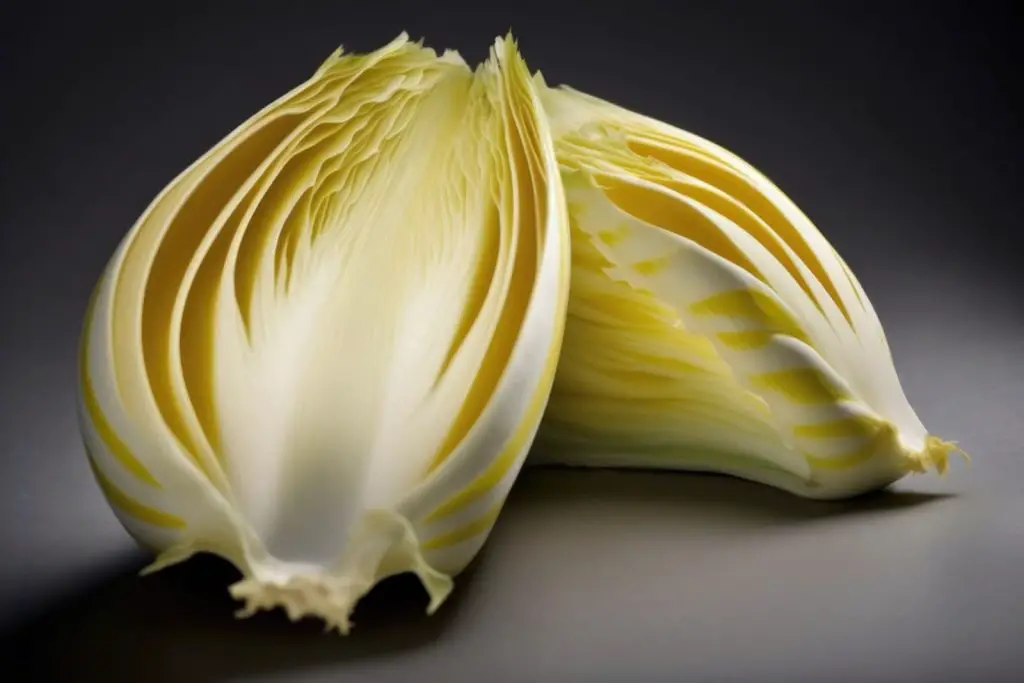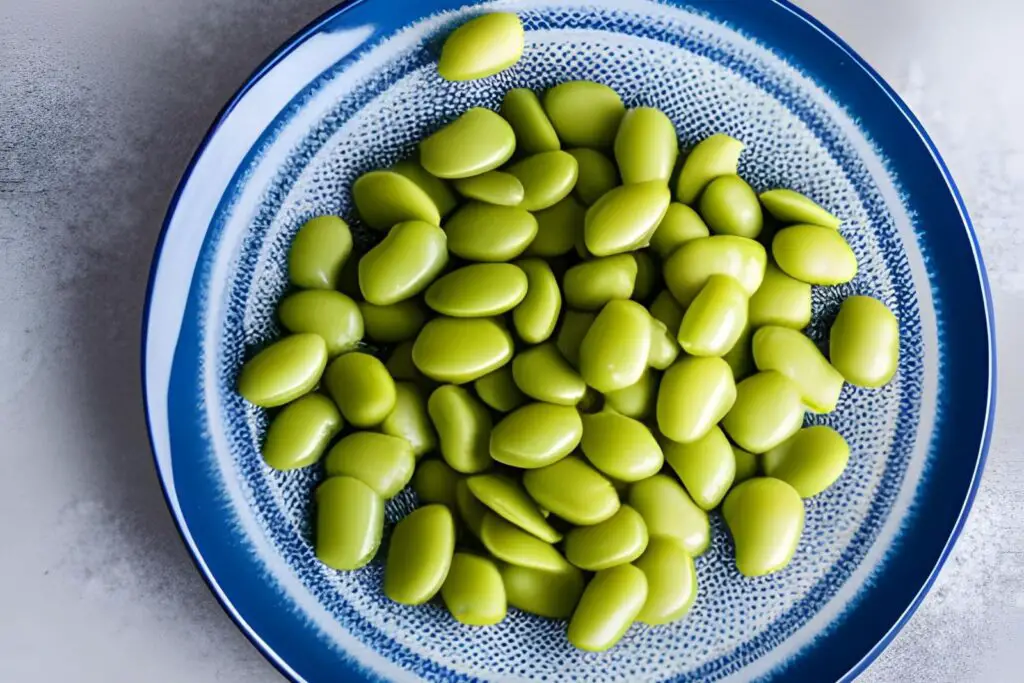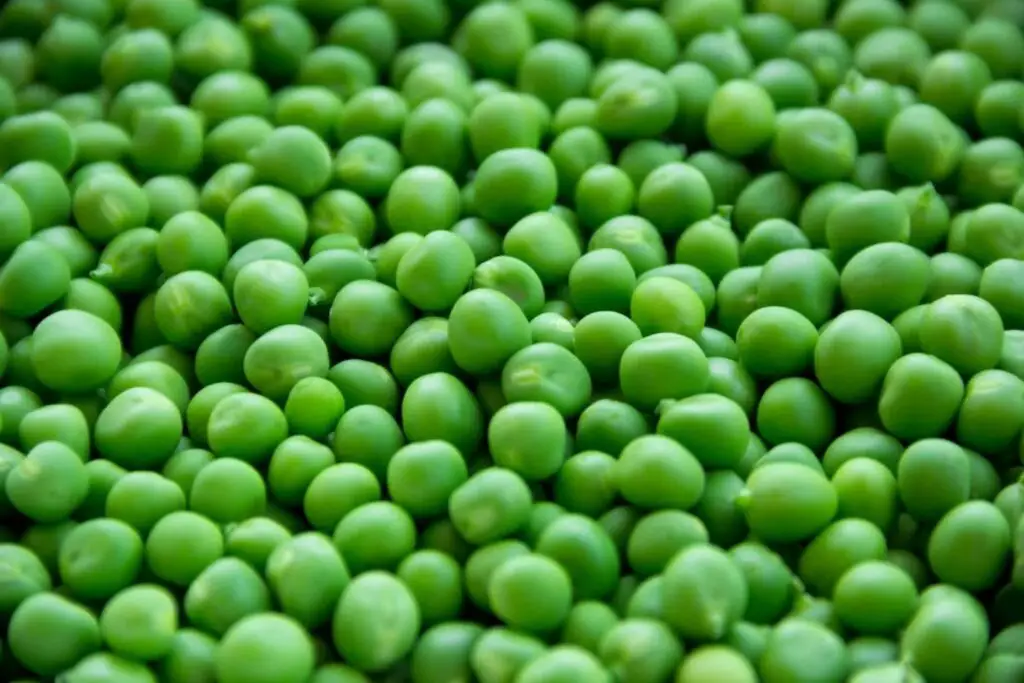
Jerusalem artichokes, also known as sunchokes, are root vegetables that belong to the sunflower family. They have a unique flavor and are often used in various recipes. If you have a surplus of Jerusalem artichokes or want to preserve them for later use, freezing is an excellent option. Freezing Jerusalem artichokes allows you to enjoy their delicious taste and nutritional benefits even when they are out of season. This article provides a step-by-step guide on how to freeze Jerusalem artichokes while ensuring that they maintain their quality and texture.
Here’s a comprehensive guide on freezing Jerusalem artichokes:
Step 1: Select fresh Jerusalem artichokes
Choosing fresh and firm Jerusalem artichokes is essential to ensure optimal freezing results. When selecting Jerusalem artichokes for freezing, it’s important to consider their quality and appearance. Here’s why:
- Freshness: Fresh Jerusalem artichokes have a higher water content and are less likely to become mushy or lose their texture when frozen. They also retain their natural flavor and nutritional value. Look for tubers that are recently harvested or sourced from a reputable supplier.
- Firmness: Firm Jerusalem artichokes indicate that they are in good condition and have not started to deteriorate. A soft or spongy texture may indicate decay or spoilage, which can affect the quality of the frozen artichokes. Firm tubers freeze better and maintain their structure and texture during the freezing process.
- Smooth skin: Jerusalem artichokes with smooth skin are less likely to have blemishes, bruises, or surface imperfections. These imperfections can impact the quality and taste of the frozen artichokes. Smooth-skinned tubers are easier to wash and prepare for freezing.
- Blemish-free: Inspect the Jerusalem artichokes closely and avoid any tubers with visible blemishes, mold, or signs of decay. Blemished artichokes may have compromised integrity, and freezing them can result in unpleasant texture and off-flavors. Choose tubers that are free from any discoloration, soft spots, or mold growth.
Step 2: Wash and trim the tubers
Washing and trimming Jerusalem artichokes before freezing is an essential step to ensure cleanliness, remove any dirt or debris, and eliminate blemishes or bruises that can affect the quality of the frozen tubers. Here’s why it’s important:
- Removing dirt and debris: Jerusalem artichokes grow underground, and as a result, they can accumulate dirt and other impurities on their skin. Washing them under running water helps to remove any dirt particles, sand, or other debris that may be present. This step ensures that you freeze clean and hygienic tubers.
- Scrubbing with a vegetable brush: Sometimes, Jerusalem artichokes may have stubborn dirt or residue stuck to their skin. Gently scrubbing them with a vegetable brush helps to loosen and remove any remaining dirt. It’s especially useful if the tubers have irregular shapes or crevices where dirt can be trapped.
- Trimming blemishes, bruises, or tough spots: Before freezing, it’s important to inspect the Jerusalem artichokes for any blemishes, bruises, or tough spots. These areas may have started to deteriorate or may affect the quality of the frozen tubers. Use a sharp knife to trim off any such imperfections, ensuring that you remove a small portion around the affected area.
Can I freeze Jerusalem artichokes with the skin on?
While it is possible to freeze Jerusalem artichokes with the skin on, it is generally recommended to peel them before freezing. The skin can become tough and affect the texture of the tubers when thawed. However, if you prefer to freeze them with the skin on, ensure they are properly cleaned and stored in an airtight manner to prevent freezer burn.
Can I freeze Jerusalem artichokes that have been cut or sliced?
Yes, you can freeze cut or sliced Jerusalem artichokes. However, it is recommended to blanch them before freezing for better preservation. Properly package and seal the cut pieces to prevent freezer burn.
Step 3: Blanch the Jerusalem artichokes
Blanching Jerusalem artichokes before freezing is an important step that helps preserve their color, flavor, and texture. Here’s why blanching is necessary and how to do it:
- Preserving color: Blanching involves briefly boiling the Jerusalem artichokes, which helps to deactivate enzymes responsible for color changes. By blanching, you can retain the vibrant and appetizing color of the artichokes even after freezing. This is especially important for maintaining the visual appeal of the tubers in recipes or dishes.
- Retaining flavor: Blanching helps to partially cook the Jerusalem artichokes, which can improve their flavor profile. It helps to lock in the natural flavors and prevent loss of taste during freezing. The blanched Jerusalem artichokes will still require additional cooking when you use them later, but the initial blanching enhances the overall taste.
- Preserving texture: The brief boiling during blanching helps to soften the Jerusalem artichokes slightly, making them more resistant to texture changes during freezing. It helps to maintain their crunchiness or tenderness, depending on the desired texture. Blanching also helps to preserve the structural integrity of the tubers, preventing them from becoming mushy or overly soft during freezing.
How to blanch Jerusalem artichokes:
- Bring a large pot of water to a boil. The pot should be large enough to accommodate the Jerusalem artichokes comfortably.
- Prepare the Jerusalem artichokes by washing and trimming them, as mentioned in Step 2. Remove any blemishes, bruises, or tough spots.
- Add the prepared Jerusalem artichokes to the boiling water. The blanching time will vary depending on the size of the tubers. Typically, blanch small Jerusalem artichokes for about 3 minutes, while larger ones may require 5 minutes. The goal is to partially cook them, so they are slightly tender but not fully cooked.
- After the blanching time is complete, immediately transfer the Jerusalem artichokes to a bowl filled with ice water. This process rapidly cools them and stops the cooking process, preserving their texture.
Can I freeze Jerusalem artichokes without blanching them?
While blanching is recommended for optimal results, it is possible to freeze Jerusalem artichokes without blanching. However, keep in mind that blanching helps preserve their color, flavor, and texture better during freezing.
Step 4: Cool and drain the tubers
Cooling and draining the Jerusalem artichokes after blanching is an important step in the freezing process. It helps to halt the cooking process, prevent further softening, and remove excess moisture from the tubers. Here’s why it’s essential:
Halting the cooking process: Blanching involves briefly boiling the Jerusalem artichokes, which helps to preserve their color, flavor, and texture. However, it’s crucial to stop the cooking process promptly to prevent the tubers from becoming overcooked or mushy. Transferring them to a bowl filled with ice water immediately after blanching rapidly lowers their temperature and halts the cooking process.
Maintaining texture: Cooling the Jerusalem artichokes in ice water helps to cool them down quickly and preserve their texture. Rapid cooling helps to lock in their crispness and prevent them from becoming soft or mushy during freezing. This step is particularly important if you want to maintain a firm and crunchy texture in the frozen tubers.
Removing excess moisture: Drain the cooled Jerusalem artichokes thoroughly to remove any excess moisture. Excess moisture can lead to the formation of ice crystals, which can cause freezer burn and adversely affect the quality of the frozen tubers. Draining the tubers effectively removes the water accumulated during the blanching and cooling process.
Step 5: Arrange and flash-freeze the tubers
Properly arranging and flash-freezing the blanched and drained Jerusalem artichokes is a crucial step in the freezing process. It ensures that the tubers freeze quickly and maintain their shape, texture, and quality. Here’s why this step is important:
- Preventing sticking together: Similar to Step 5 in the original article, arranging the Jerusalem artichokes in a single layer on a baking sheet or tray, without touching each other, prevents them from sticking together during freezing. This allows for easy separation and portioning when you need to use them later.
- Flash-freezing for individual freezing: Flash-freezing involves freezing the Jerusalem artichokes at a very low temperature for a short period. By placing the baking sheet or tray with the arranged tubers in the freezer, the individual freezing process is accelerated. Flash-freezing ensures that each tuber freezes quickly and independently, maintaining their shape and texture. This method also helps to minimize the formation of ice crystals, which can cause freezer burn and affect the quality of the frozen tubers.
- Quick freezing time: Leaving the Jerusalem artichokes in the freezer for about 1-2 hours, or until they are completely frozen, ensures that they are adequately frozen throughout. The exact freezing time may vary based on the thickness and size of the tubers. Freezing them until they are completely frozen helps preserve their taste, texture, and nutritional value.
Step 6: Package and seal the tubers
Proper packaging and sealing of frozen Jerusalem artichokes are crucial for maintaining their quality, preventing freezer burn, and ensuring long-term storage. Here’s why this step is important:
- Preserving quality: Packaging the frozen Jerusalem artichokes in freezer-safe bags or airtight containers helps to protect them from exposure to air, which can lead to freezer burn. Freezer burn can cause dryness, loss of flavor, and a decline in overall quality. By sealing the tubers tightly, you create a barrier that helps maintain their taste, texture, and nutritional value.
- Minimizing air exposure: Removing as much air as possible from the packaging is essential to minimize the risk of freezer burn. Air contains moisture, which can result in the formation of ice crystals on the surface of the Jerusalem artichokes. These ice crystals can lead to a deterioration in texture and flavor. By reducing air exposure, you enhance the preservation of the tubers during freezing and storage.
- Preventing odor absorption: Properly sealed packaging helps to prevent the absorption of odors from other foods in the freezer. Jerusalem artichokes can easily absorb odors from strong-smelling foods, which can affect their taste and aroma. Airtight packaging acts as a barrier, keeping the frozen tubers free from unwanted odors.
- Convenient storage: Packaging the Jerusalem artichokes in freezer-safe bags or airtight containers allows for organized and efficient storage in the freezer. It helps to keep the tubers together, prevents them from getting lost, and makes it easier to retrieve the desired amount when needed.
Step 7: Label and date the packages
Labeling and dating the packages of frozen Jerusalem artichokes is an essential step for organization, tracking, and maintaining the quality of the tubers. Here’s why this step is important:
- Keeping track of freezing time: By labeling each package with the date of freezing, you establish a reference point for how long the Jerusalem artichokes have been in the freezer. This information is crucial for monitoring their storage duration and ensuring that you use the oldest packages first. Frozen Jerusalem artichokes are best consumed within a certain timeframe to maintain their optimal taste and texture. By tracking the freezing time, you can prioritize using the oldest packages before they start to decline in quality.
- Organizing the freezer: Labeling the packages with the contents (Jerusalem artichokes) helps to quickly identify them in a freezer filled with various frozen items. It prevents confusion and saves time when retrieving the desired package for a specific recipe.
- Preventing waste: By labeling the packages, you have a clear indication of the contents and the date of freezing. This information enables you to manage your freezer inventory more effectively. You can use the labeled packages strategically to ensure that none of the frozen Jerusalem artichokes go to waste. Knowing the freezing date allows you to plan and consume the oldest packages first, preventing them from being forgotten or left unused for too long.
- Maintaining quality control: Labeling the packages creates a system for quality control. You can monitor the storage duration of the frozen Jerusalem artichokes and assess their condition over time. If you notice any changes in texture, flavor, or quality, you can make adjustments to your freezing and storage practices accordingly.
By using a permanent marker to label each package with the contents and date of freezing, you establish an organized system for managing your frozen Jerusalem artichokes. This step helps you track the freezing time, prioritize usage, prevent waste, and maintain the overall quality of the tubers for a delightful culinary experience.
Step 8: Store in the freezer
Proper storage of the labeled Jerusalem artichoke packages in the freezer is crucial for maintaining their quality and maximizing their shelf life. Here’s why this step is important:
- Maintaining temperature: The ideal storage temperature for frozen Jerusalem artichokes is 0°F (-18°C) or below. Freezing at this temperature ensures that the tubers remain frozen solid and prevents any potential bacterial growth or spoilage. A stable freezer temperature helps maintain the texture, taste, and nutritional value of the Jerusalem artichokes throughout their storage period.
- Preserving quality: Storing the labeled packages in a stable position in the freezer minimizes the risk of physical damage or accidental thawing. It’s important to arrange the packages in a way that prevents them from being crushed, punctured, or displaced. Proper storage prevents the artichokes from getting exposed to temperature fluctuations or air, which can lead to freezer burn or loss of quality.
- Maximizing shelf life: When stored under optimal conditions, properly frozen Jerusalem artichokes can maintain their quality for up to 10-12 months. By storing them in the freezer at the recommended temperature, you can maximize their shelf life and enjoy the flavor and texture of the artichokes even when they are out of season. It’s important to note that while the artichokes may still be safe to consume beyond this time frame, there may be a gradual decline in quality.
- Inventory management: Storing the labeled packages in a well-organized manner helps with inventory management. By keeping track of the quantity, freezing date, and position of the packages, you can easily plan your meals and use the oldest packages first, ensuring minimal food waste.
Can I freeze Jerusalem artichokes for an extended period, such as over a year?
While properly frozen Jerusalem artichokes can maintain their quality for up to 10-12 months, it is generally recommended to consume them within 6-8 months for the best taste and texture. Freezing for an extended period may lead to a decline in quality.
Other related questions
How do I defrost Jerusalem artichokes?
To defrost Jerusalem artichokes, follow these steps:
- Transfer the frozen Jerusalem artichokes from the freezer to the refrigerator. Place them in a container or on a plate to catch any potential moisture as they thaw.
- Allow the Jerusalem artichokes to defrost in the refrigerator overnight or for approximately 8 to 12 hours. The slow thawing process in the refrigerator helps to maintain the quality and texture of the tubers.
- Once thawed, the Jerusalem artichokes can be used in various recipes. You can cook them as you would fresh Jerusalem artichokes, whether it’s roasting, sautéing, boiling, or incorporating them into soups, stews, or salads.
Note: Avoid defrosting Jerusalem artichokes at room temperature or using methods such as microwaving, as this can lead to uneven thawing and loss of quality.
Can I refreeze Jerusalem artichokes?
No, it is not recommended to refreeze Jerusalem artichokes once they have been thawed. Refreezing can negatively impact the quality, texture, and flavor of the tubers. It is best to consume or use the thawed Jerusalem artichokes promptly after they have been defrosted to ensure optimal taste and texture.
How do I know if the Jerusalem artichokes have gone bad after being frozen?
After being frozen, if Jerusalem artichokes develop an off smell, slimy texture, or significant discoloration, it may indicate spoilage and that they have gone bad. Additionally, if the tubers exhibit signs of mold growth or an unpleasant taste, it is best to discard them. Always rely on your senses and use caution when consuming frozen Jerusalem artichokes that appear to be spoiled.
Can I freeze Jerusalem artichoke puree?
Yes, you can freeze Jerusalem artichoke puree. Ensure that it is properly cooled before transferring it into airtight containers or freezer-safe bags. Label and date the packages, and store them in the freezer for future use.
Can I freeze Jerusalem artichokes in water?
While it is possible to freeze Jerusalem artichokes in water, it is not necessary and may affect their texture when thawed. It is generally recommended to blanch and drain them before freezing to maintain their quality.








